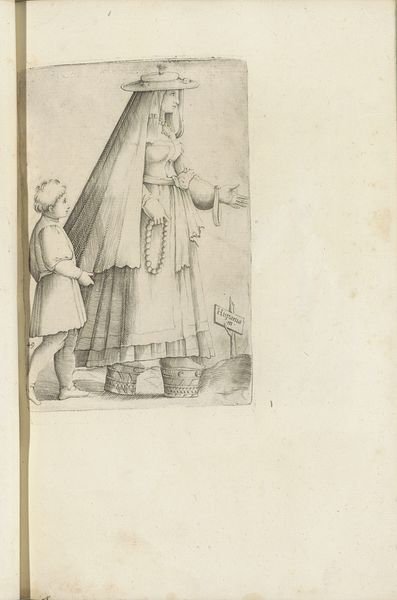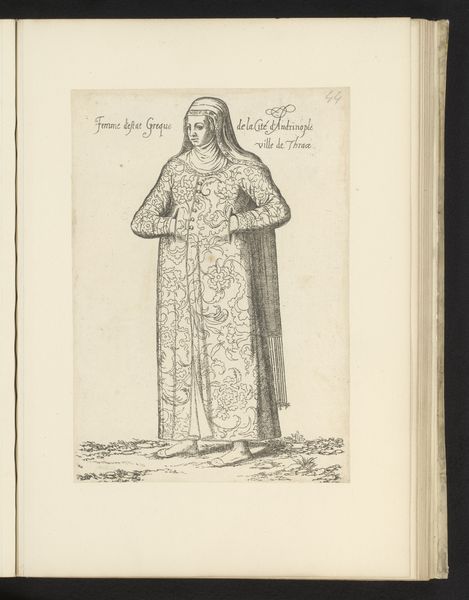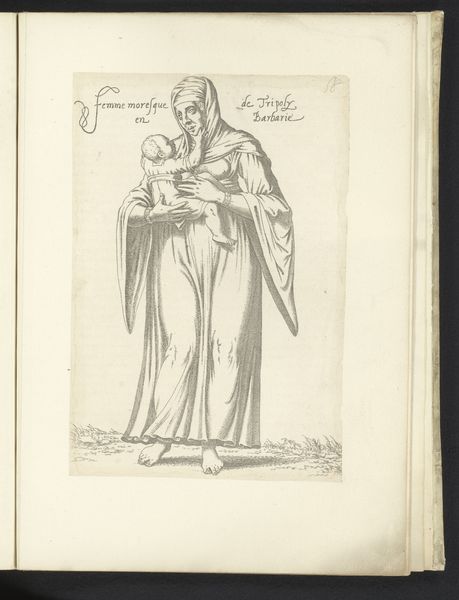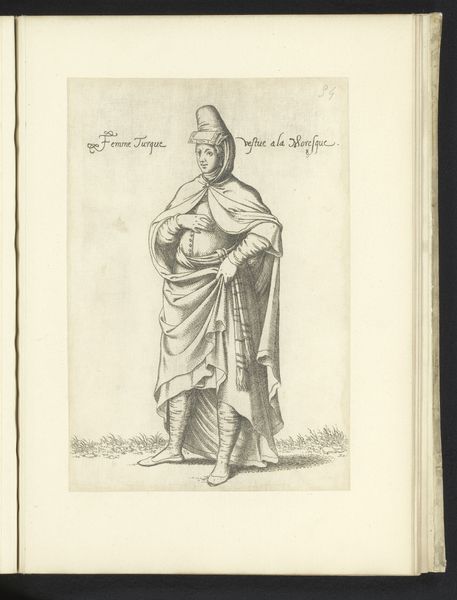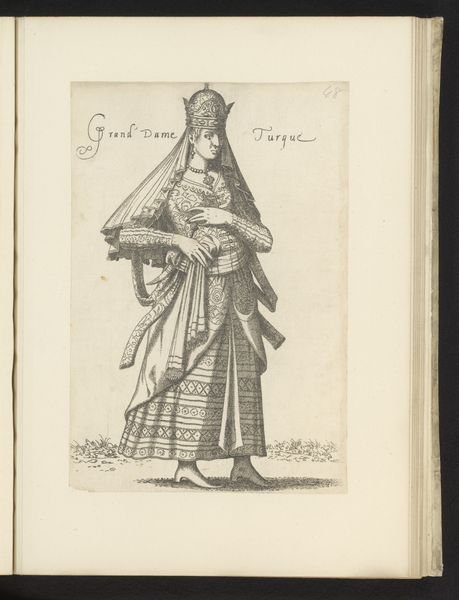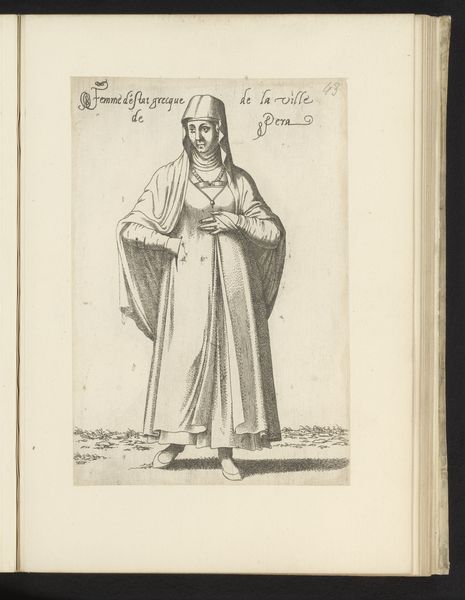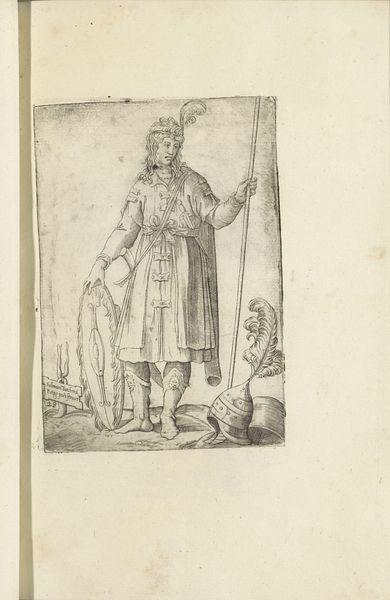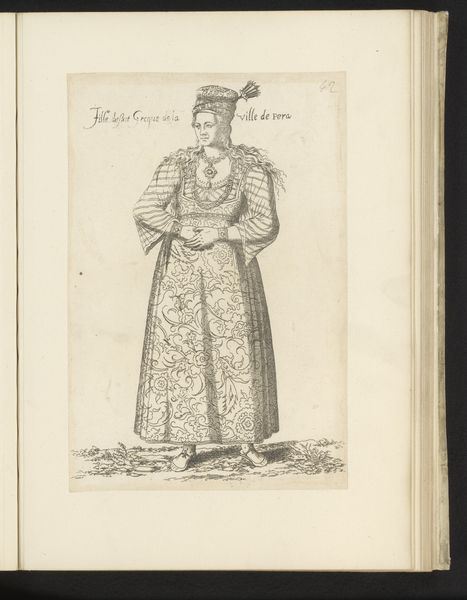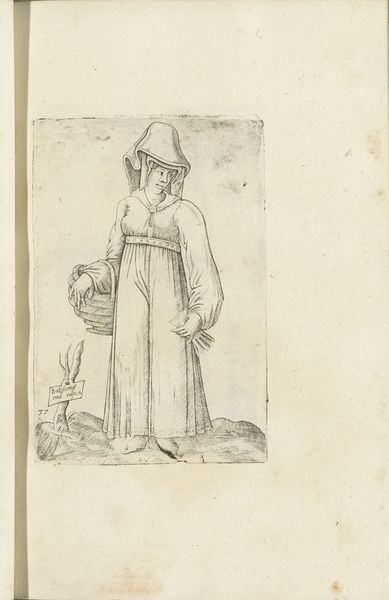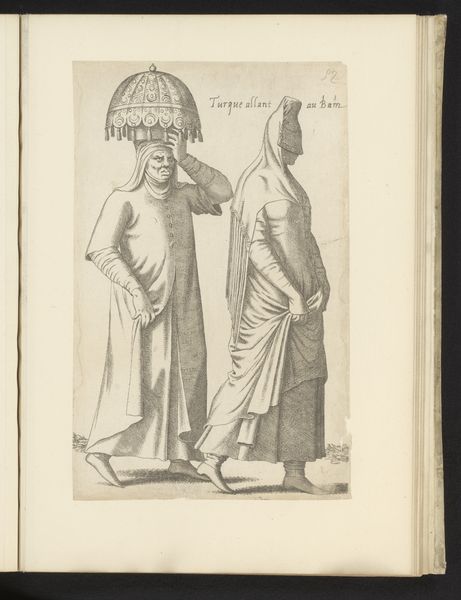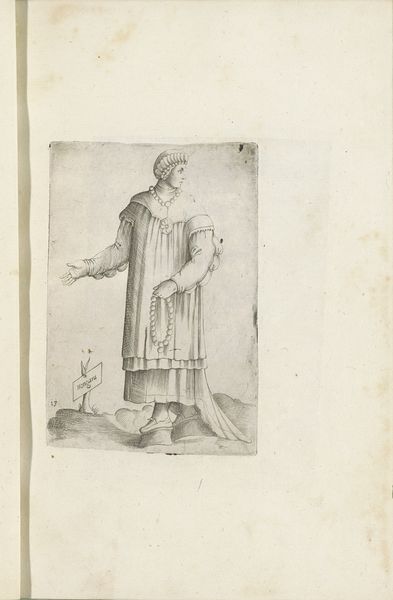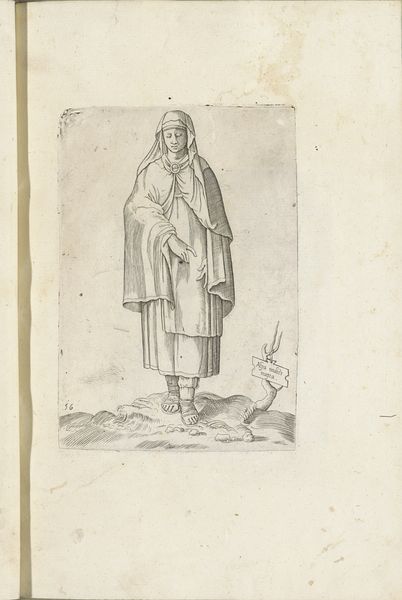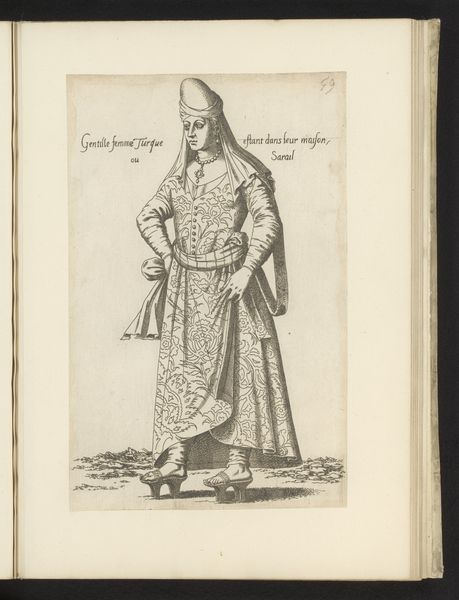
drawing, ink
#
portrait
#
drawing
#
ink drawing
#
figuration
#
ink
#
line
#
genre-painting
#
italian-renaissance
Dimensions: height 261 mm, width 174 mm
Copyright: Rijks Museum: Open Domain
Curator: What strikes you first about this ink drawing, Historian? To me, there’s a distinct power dynamic at play. Editor: Initially, I’m struck by the starkness of the composition. The almost uniform light gives everything a somewhat unsettling flat affect, as if all of this were posed. Who are we even looking at here? Curator: The work, created between 1555 and 1568, is titled “Turkse vrouw met haar twee kinderen,” translating to “Turkish woman with her two children.” It's by the artist Léon Davent, created in ink. Editor: It does seem like a posed sort of ethnographic study. There's something unsettling in that almost documentary portrayal of a clearly "Othered" group. Who do we think this artwork was created for? Was it a popular illustration or commissioned? Curator: I think that reading resonates with contemporary critical theory around Orientalism, absolutely. And what's interesting is considering its probable audience in 16th century Europe. I imagine it circulated in elite circles, fueling curiosity, perhaps reinforcing stereotypes around cultural and gendered identities as much as aiming to educate. Editor: Exactly. The placement of the figures within the frame, for instance. The mother looms large, almost blocking out the light for the smaller figures. It subtly reinforces assumptions about Eastern societies, projecting exoticism. But what about Davent himself? Where was he situated historically, culturally and professionally? Curator: Davent was a French printmaker associated with the School of Fontainebleau. His work frequently interpreted designs by Italian artists. Consider the socio-political environment: the Ottoman Empire was a powerful force. Visual representations like this one offered a way for Europeans to grapple with and often to simplify complex realities. Editor: Absolutely, this tells us something not just about its subject, but even more about Europe at that moment in time and that intersection is key to understanding Davent's larger body of work. We should encourage people to really look beyond the apparent "genre painting" aspect. Curator: Agreed, engaging with the drawing involves recognizing how visual representation can perpetuate power imbalances and how artistic interpretation reflects prevailing cultural attitudes. Editor: Well, this has certainly given me a few avenues to explore when I next view it, seeing how it operated within an image economy. Curator: Indeed. The image asks crucial questions about who has the power to represent whom, then as now.
Comments
No comments
Be the first to comment and join the conversation on the ultimate creative platform.
